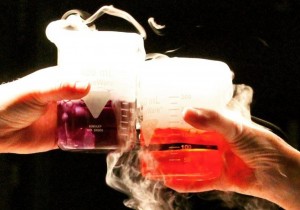 Viton fluorocarbon is an innovative material that is used in a range of applications including seals and o-rings. The Viton brand is a trusted name in industrial circles, as the fluorocarbon products are high quality and reliable. Viton fluorocarbon o-rings are commonly used in mechanics, and you will find them in both aircraft and automobiles.
Viton fluorocarbon is an innovative material that is used in a range of applications including seals and o-rings. The Viton brand is a trusted name in industrial circles, as the fluorocarbon products are high quality and reliable. Viton fluorocarbon o-rings are commonly used in mechanics, and you will find them in both aircraft and automobiles.
Why is fluorocarbon so effective, and how does it compare to other common o-ring materials such as silicone, nitrile and neoprene? It is the unique features of this material that makes it stand out, and we are here to explore the science behind Viton fluorocarbon.
The Basics of This Innovative Material
Fluorocarbon is literally a combination of carbon and fluorine. When carbon-based polymers become highly fluorinated, the properties change.
Polymers contain base molecules called monomers, and there are different fluorocarbon rubber compounds available. Each one has a unique number of monomers, and these include copolymers with two, terpolymer with three, and tetrapolymers with four.
Viton fluorocarbon has resistance to a range of severe conditions encountered by aircraft and automobile components. Seals made from this product can withstand high temperatures, fuels, oils, solvents, ozone and extreme weather. Due to the flexibility, durability and strength, Viton has become a universal o-ring material.
Where You Might Find These O-Rings and Seals
Viton fluorocarbon can stand up to a wide range of temperatures, making it a versatile solution. The numbers are impressive as the standard compound has a range of -13° to +446°F, and the special compound has a range of -13° to +446°F.
Due to the chemical resistance and ability to create an impenetrable seal, Viton o-rings are heavy duty. They are commonly used in aircraft engines and other applications where there is the possibility of contact with automotive fuels.
The Benefits of Using Viton Fluorocarbon
Viton Fluorocarbon has a hardness of 55 to 90. As it contains high levels of fluorine, there is a good resistance to swell that comes from specific fuel blends. Fuels and fluids that are high octane, oxygenated or contain ethanol or methanol are suitable matches for this material.
There are different grades available depending on the requirements for the seals. For example, some versions are more resistant to transmission oils, while others work more effectively in lower temperatures. O-rings made from Viton fluorocarbon are resistant to steam.
Every Material Has Limitations
While fluorocarbon does have a range of excellent qualities, it is not always the right choice. For example, exposure to nitro hydrocarbons, ketones, chlorosulfonic acids and amines can cause damage to items made from this material.
Despite this, the list of limitations in aviation and automobiles is relatively small as it is compatible with a large range of dynamic applications. This is why it is one of the most trusted materials for o-rings and seals in high-powered industries.
Learning About Viton Fluorocarbon
O-rings and seals are made from different materials. One of the most trusted is Viton fluorocarbon, which is made from carbon polymers that have been enhanced with high levels of fluorine.
There is a long list of benefits from using these products, including high-temperature resistance, steam tolerance and the ability to withstand fuels and gases. These seals can perform at different temperatures, and they come in a standard or special compound. While there are some limitations, the ability to stand up to ethanols and high octane fuels makes Viton an obvious choice for automotive and aircraft purposes.
